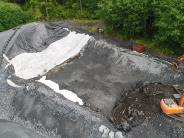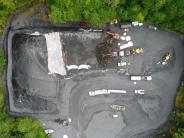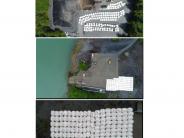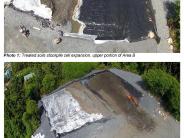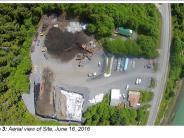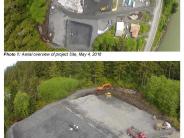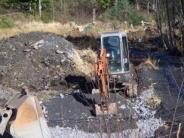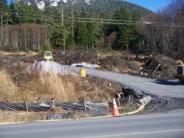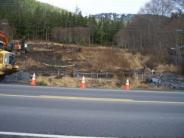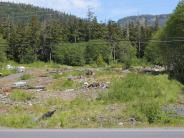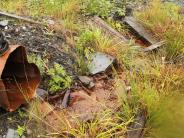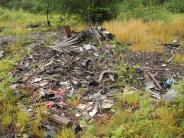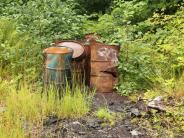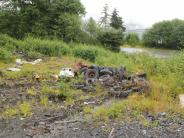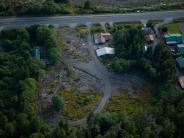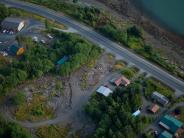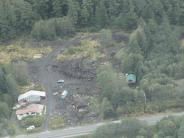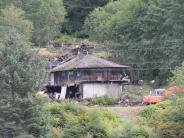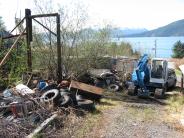State DEC Final Phase Clean-up of the former Byford Junkyard
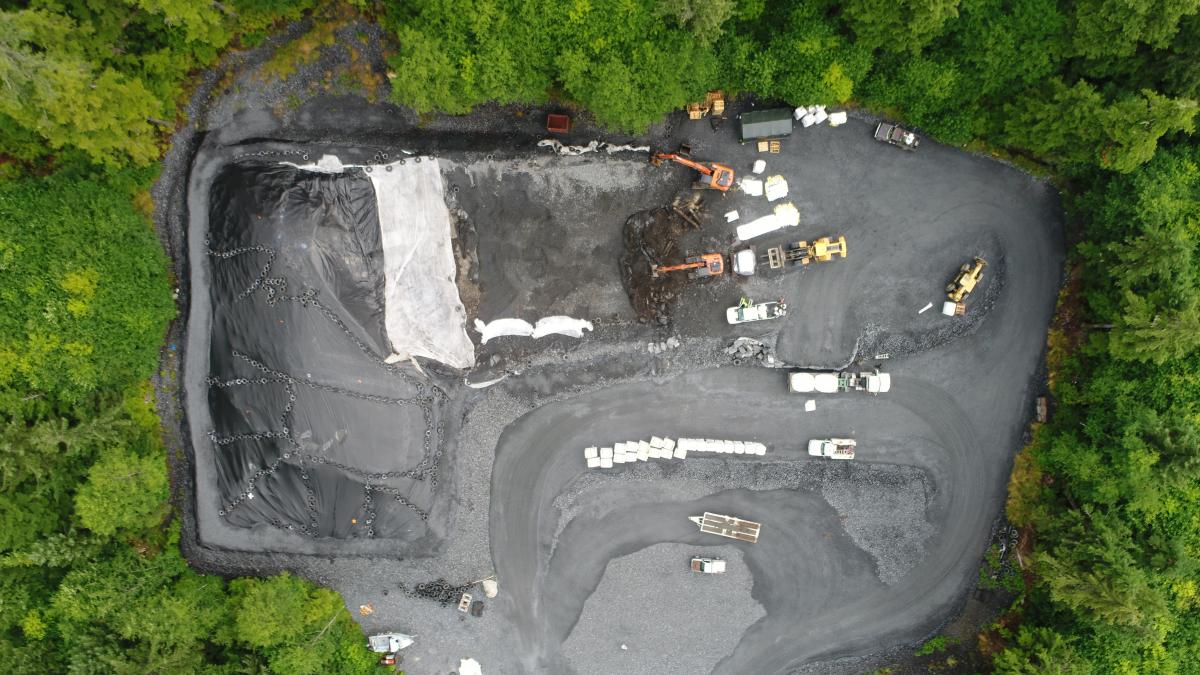
2018 UPDATES:
The crews have been working fast and furious over the last couple of months to bag and ship the treated material off island to a disposal site in the Pacific Northwest. The last barge to collect the remaining bags and all equipment will arriving in early to mid November. Site restoration will work will begin for a final site closure as soon as all bags of material have shipped.
Over last winter, a considerable number of questions were raised by community members. The tribal government, Wrangell Cooperative Association, contracted with a third party to provide an environmental analysis and raise additional questions. The State Department of Environmental Conservation did their due diligence to provide answers to all concerns. A request was made to the Governor's office to fund moving the stockpile to an off island containment site rather than in the selected pit.
During the Legislative session, there was considerable discussion regarding the additional $5 million funding request made personally by the Governor, the additional amount necessary to move the material off island. At the end of the session, the funds remained in the budget, to be taken from the Oil and Hazardous Substance Release Prevention and Response Fund, to move the material off island. That work will take place during the summer of 2018. Additional information and documents may be found on DEC's project webpage.
Previous Updates:
The State Department of Environmental Conservation held a well attended public meeting on August 21, 2017 providing an overview and answering questions of the clean-up effort and the plans to construct a monofil. Documents from the meeting are provided below.
As a result of the public meeting, meetings with WCA and further correspondence, DEC has indicated that no more work will take place this fall in order to give the community time to find additional funds to ship the material off island or to analyze a new disposal site. Work would likely commence next April.
During 2016, the Alaska Department of Environmental Conservation (ADEC) managed cleanup activities at the former Wrangell (Byford) Junkyard contaminated site to prevent the risk of the public’s exposure to contamination and the migration of the contamination to nearby Zimovia Strait and adjacent private lands. The top priority is to protect public health and the environment.
The State used than $6 million from the Oil and Hazardous Substance Release Prevention and Response Fund for the cleanup effort that resulted in the shipment of 22 drums and 57 containers full of contaminated debris to permitted facilities in the Lower 48. It also left 18,350 cubic yards of treated soil at the site. The soil had been stabilized with EcoBond, which made the lead non-leachable. Though the soil is treated and will not impact surface or ground water, there is threat of ingestion if it is not properly contained in an appropriate disposal site or facility.
The cleanup work is complete, except for final disposal of the soil, which is slated to be moved to a monofill that will be constructed in a rock pit off Pat Creek Road. The site determined to be most suitable is an inactive DNR rock pit located on state land on Pat’s Creek Road. DEC has requested an additional $5.5 million from the Response Fund in order to properly prepare the site and access road, transport the material, contour the material, and construct a cap that will include a membrane liner, sand layer, rock layer, topsoil, and vegetation. DEC is estimating it will take approximately 2,000 truck trips to move the soil to the monofill site.
Updates and clean-up activities will be posted on this site. For the August 2017 Press release and a Frequently Asked Questions document regarding the final phase, please click on the file links below.
The former Wrangell (Byford) Junkyard located at approximately 4-mile Zimovia Highway showed high levels of lead and other metals that could pose a risk to human health. The property, Lot Y2, Tract Y, USS 2321, was previously used for historic salvage operations and is now owned by the City and Borough of Wrangell.
The junk yard was in operation from the 1960s to the 1990s. Sampling of the area in 2015 showed levels of lead and other metals, polychlorinated biphenyl (PCBs), pentachlorophenol (PCPs), polycyclic aromatic hydrocarbon (PAHs), and other contaminants in the soil that raised human health and environmental concerns. The most dangerous concentrations of these pollutants came from incinerated, crushed, and emptied batteries, drums, and transformers. It is estimated that more than 1,500 automobiles were disposed at the junk yard.
The City and Borough of Wrangell foreclosed on the property in 2009 for the nonpayment of taxes. It has restricted access and posted warnings that the shellfish harvested on the nearby beach may be contaminated from polluted water runoff from the junk yard. The City, with limited budget resources, helped with brush removal and worked with a local contractor to remove most of the scrap metal for the value of the scrap.
Funding for the cleanup is coming from the Response Account in the State’s Oil and Hazardous Substance Release Prevention and Response Fund, which is available to DEC under Alaska Statute 46.08.040(a) to respond to pollution that poses an imminent and substantial threat to the public health or welfare, or to the environment.
For more information on the Wrangell Junkyard, visit the DEC Contaminated Sites Program web site at: http://dec.alaska.gov/spar/csp/sites/wrang_junkyard.htm . For information regarding the monofil site for longterm storage of the treated material go to http://dec.alaska.gov/spar/csp/RFPWebsiteDocuments/WrangellJunkyardRepos... .

